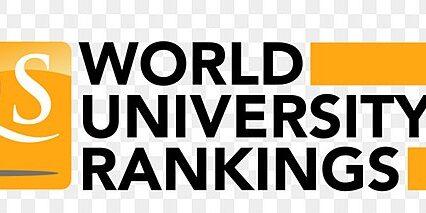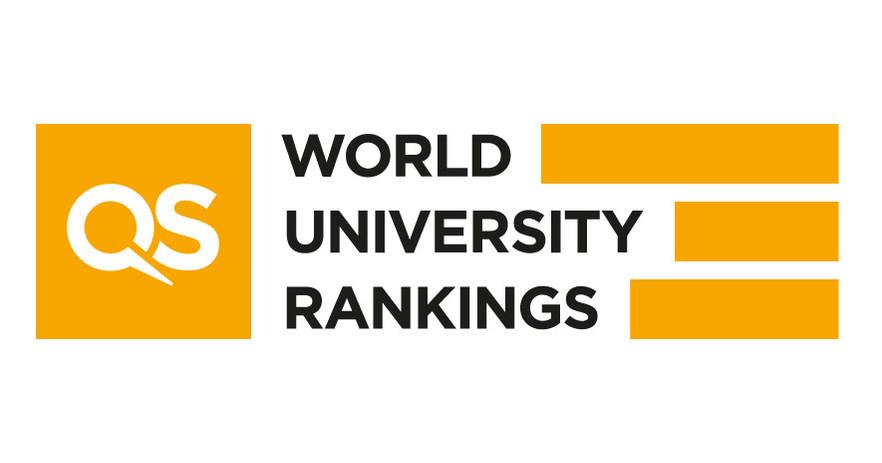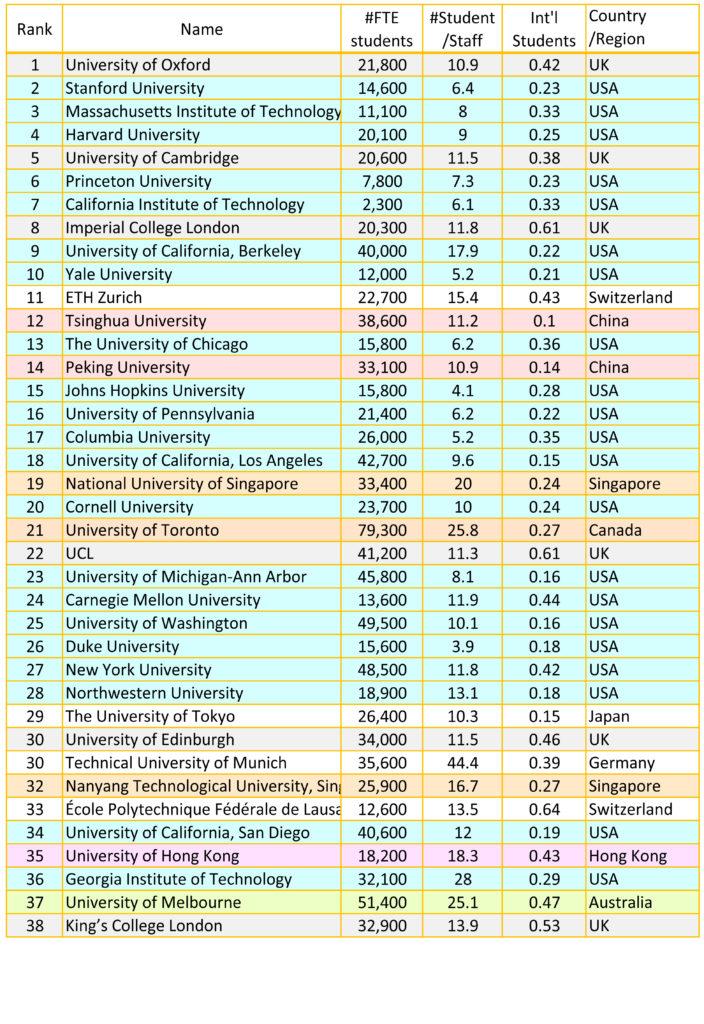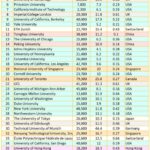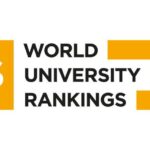Now Reading: Understanding the differences between national and international subject specific rankings.
-
01
Understanding the differences between national and international subject specific rankings.
Understanding the differences between national and international subject specific rankings.

In an ever-globalizing world, the quest for quality education and institutional excellence frequently enough leads students, educators, and policymakers to confront a myriad of rankings that promise to illuminate the best paths forward. Yet, as we navigate through the maze of national and international subject-specific rankings, a essential question emerges: what exactly do these rankings measure, and how do they differ? While national rankings may reflect localized strengths and priorities, international rankings strive to offer a broader canvas, colored by diverse academic cultures and global standards. This article will guide you through the intricacies of these two frameworks, shedding light on their distinct methodologies, implications for institutions, and how they can influence the choices of prospective students and researchers alike. Understanding these differences is not merely an academic exercise; it’s a vital tool for anyone eager to discern the landscape of higher education today.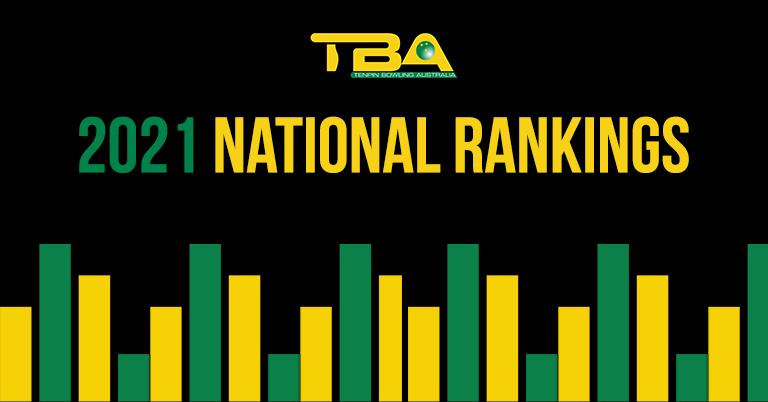
Exploring the Foundations of National and International Rankings
Understanding the nuances between national and international rankings requires delving deeper into their foundational structures. National rankings typically focus on metrics pertinent to institutions within a specific country, considering factors such as regional reputation, academic performance, and employment outcomes. These rankings reflect the educational landscape of the nation, making them invaluable for local students and stakeholders. Criteria for evaluation might include:
- Academic Reputation: Survey responses from academics within the country.
- graduation Rates: Percentage of students completing their programs.
- Faculty Credentials: The qualifications and publication records of teaching staff.
on the other hand, international rankings provide a broader perspective, assessing institutions based on global standards and recognizing their impact across borders. These rankings often utilize a more diverse array of metrics, aiming to gauge an institution’s influence on a global scale. Factors influencing these international evaluations may include:
- Global Research Output: The volume and impact of research publications.
- International Collaboration: Partnerships with foreign institutions.
- Student Diversity: Proportion of international students enrolled.
Understanding these differences enhances our gratitude of how educational institutions position themselves within various contexts.

Evaluating Methodologies: How Rankings are Constructed
When it comes to evaluating methodologies for constructing rankings, it’s crucial to delve into the criteria that underpin both national and international assessments. National rankings often emphasize metrics that resonate with local needs and priorities, such as faculty-to-student ratios, teaching quality, and regional industry partnerships. These rankings aim to provide a snapshot of institutions’ performance within a specific country, reflecting socio-economic factors that might be unique to that context. Clarity in data sources and clarity in evaluation workflows are essential in ensuring that these rankings hold meaning for prospective students and policymakers alike.
in contrast, international rankings typically adopt a broader lens, weighing factors that can be more universally applied. They often incorporate global research impact, citations per faculty, and international collaboration, encouraging institutions to compete on a global scale. To effectively communicate these methodologies, many rankings utilize diverse datasets that include surveys of academic reputation alongside bibliometric analyses. The differentiation in methodology can be summarized in the following table:
| factor | National Rankings | International Rankings |
|---|---|---|
| Focus | Local context and priorities | Global competitiveness and reputation |
| Metrics | Teaching quality,local partnerships | Research impact,international collaboration |
| Data Sources | National survey responses,government data | Global data,bibliometric analysis |

Impact on Academic Prestige and Institutional Strategy
Academic prestige is considerably influenced by rankings, shaping perceptions of institutions both nationally and internationally. While national rankings often reflect local priorities and benchmarks, international rankings tend to highlight a wider, more diverse array of factors, including research output and global collaborations. As a result, institutions often find themselves strategizing how to improve their standing in these influential lists. Key factors affecting academic prestige include:
- Research output: National rankings may prioritize locally impactful research, whereas international rankings often emphasize global relevance.
- Student Diversity: International rankings heavily weigh the presence of international students, while national rankings may not.
- Global Partnerships: Collaborations with international institutions can boost an institution’s rank worldwide.
To effectively adapt their strategies,institutions must consider how their unique missions align with these contrasting ranking systems. Academic strategies may evolve to focus on enhancing certain metrics that are disproportionately weighted in international rankings, such as:
| Metric | National Focus | International Focus |
|---|---|---|
| Research Funding | Local grants and projects | Global research partnerships |
| Community Engagement | Local impact and outreach | International collaborations |
| Quality of Education | National accreditation standards | Global educational benchmarks |
By navigating these contrasting landscapes, institutions can bolster their academic prestige and strategically position themselves to attract talent, funding, and collaboration opportunities that enhance their overall standing on the global stage.

Navigating the Rankings Landscape: Strategic recommendations for Institutions
In the intricate landscape of academic rankings, institutions must take a proactive approach to evaluate their standing and strategically align their strengths with the criteria used by both national and international rankings. To excel in the national arena, institutions should focus on enhancing their local impact by fostering relationships with businesses and communities. Key strategies include:
- Strengthening industry partnerships: Collaborating with local industries can enhance research output and employability of graduates.
- Promoting community engagement: initiatives supporting local advancement can significantly boost reputation and visibility.
- Investing in faculty development: Encouraging research and published work among faculty members can improve overall academic metrics.
Conversely, for international rankings, institutions need a more global perspective. This involves showcasing research contributions that resonate on a broader scale and increasing international collaborations. Institutions can adopt the following practices:
- Establishing global research partnerships: Collaborative research with international peers can enhance credibility and visibility on a global stage.
- Increasing student diversity: Welcoming international students and faculty can create a rich learning environment and enhance institutional profile.
- Adapting to global research trends: Aligning research priorities with global challenges ensures relevance and attracts international attention.
| Criteria | National Rankings | International Rankings |
|---|---|---|
| Focus Area | Local impact and partnerships | Global reach and collaboration |
| research Metrics | Regional publications and citations | Global research output and innovation |
| Student Demographics | Mainly domestic students | Diverse international student body |
In Retrospect
In the ever-evolving landscape of education and research,understanding the distinctions between national and international subject-specific rankings is not merely an academic exercise; it is a crucial endeavor. These rankings serve as navigational tools, guiding students, researchers, and institutions through the intricate maze of quality assessment in academia.While national rankings may offer a localized lens, reflecting cultural priorities and educational standards, international rankings provide a broader perspective, allowing for cross-border comparisons and a glimpse into global excellence.As we conclude our exploration,it is clear that each type of ranking plays a unique role in shaping perceptions of institutional value and academic prowess. By appreciating the nuances and implications of these rankings, we empower ourselves with knowledge that informs critical decisions in education, collaboration, and research. Weather you are a prospective student weighing your options, an academic looking to assess your institution’s position, or simply an inquisitive mind seeking to understand the global educational landscape, recognizing the differences between these rankings can illuminate the path ahead.
in a world increasingly defined by interconnectedness,let us embrace the insights offered by both national and international rankings,allowing them to enrich our understanding and drive us towards a more informed and engaged academic journey.













